Get PeakVisor App
Sign In
Search by GPS coordinates
- Latitude
- ° ' ''
- Longitude
- ° ' ''
- Units of Length

Yes
Cancel
Share ×

Scan the QR code and open PeakVisor on your phone
❤ Wishlist ×
Choose
Delete
Forming the bridge between Europe and Asia, the Republic of Turkey (Türkiye Cumhuriyeti) is a country known for its rich culture, stunning architecture, diversity of landscapes, and fantastic cuisine. Turkey also contains 13702 named mountains, the highest and most prominent of which is Mount Ararat (Ağrı Dağı) at 5,165m (16,946ft).
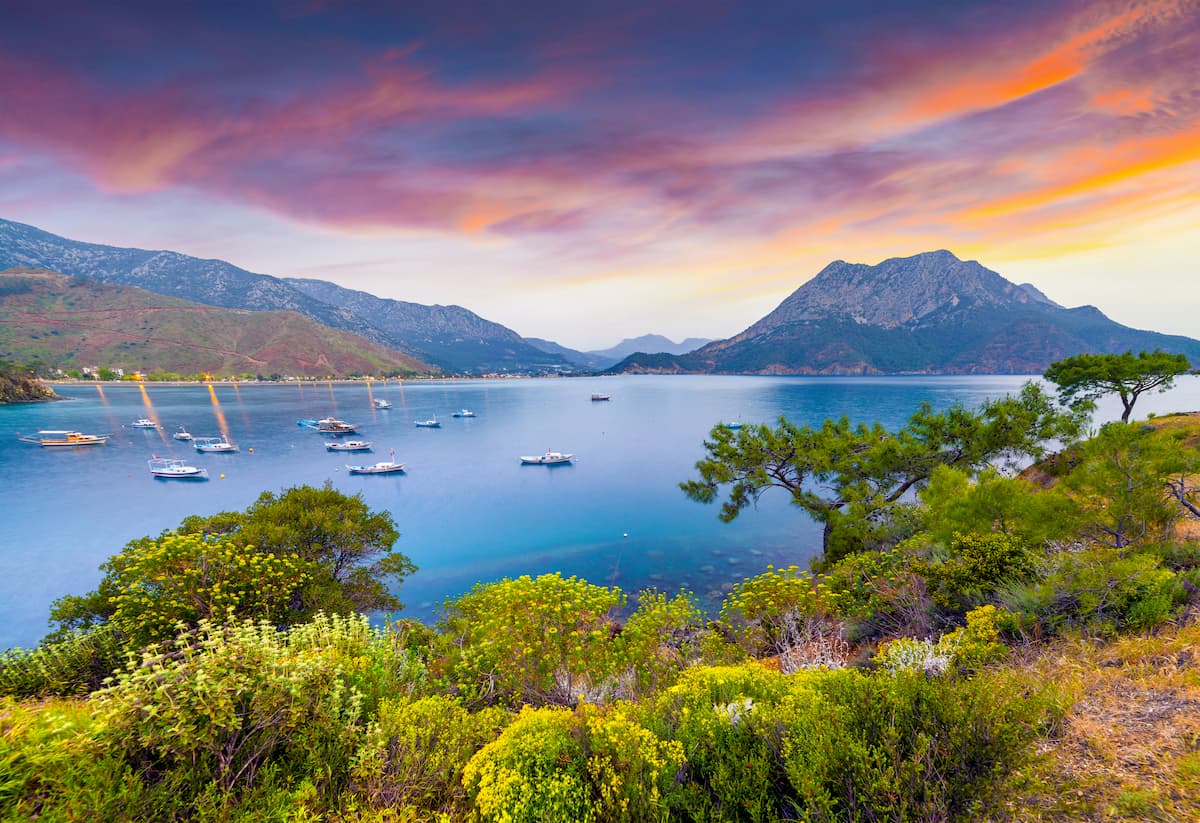
Quite literally spanning both Europe and Asia, Turkey is located partly on the Balkan Peninsula of southeastern Europe and partly on the Anatolian Peninsula in western Asia. Covering an area of some 783,356 sq. km (302,455 sq. mi), Turkey is the 36th largest country on Earth but only the 107th most densely populated.
Due to its transcontinental location, Turkey shares its land and maritime borders with quite a few different countries. In particular, it is situated to the east of both Greece and Bulgaria and to the west of Georgia, Armenia, and Iran. Meanwhile, Iraq and Syria are located to the southeast of Turkey.
As far as maritime borders go, Turkey is separated from Cyprus to the south by the Levantine Sea within the Mediterranean. Within the Levantine Sea there are quite a few maritime borders, including those of Syria, Lebanon, Israel, and Egypt. The country also shares a maritime border with Greece in the Aegean Sea.

Moreover, Turkey is unique in that it is the only country to border both the Mediterranean to the south and the Black Sea to the north. Due to the sheer size of Turkey’s Black Sea coastline, it actually shares a maritime border with Bulgaria, Romania, the Ukraine, Russia, and Georgia.
Within Turkey, there are 7 official geographical regions, as defined by the First Geography Congress (Birinci Türk Coğrafya Kongresi) of Turkey in 1941. The regions are defined by their geographical features, climate, culture, and the like, resulting in 3 interior and 4 coastal regions.
The region of Marmara (Marmara Bölgesi) encompasses the westernmost portion of Turkey, including the country’s largest city - Istanbul. Interestingly, it is the second smallest region by area, yet the most densely populated.
It is also the only region that is located in both Europe and Asia, as it straddles the Bosporus Strait (İstanbul Boğazı/Βόσπορος Bosporos). The European portion of Marmara - known as East Thrace (Doğu Trakya/Ανατολική Θράκη/Източна Тракия) is just 3% of the country’s total land area, though it is home to about 14% of the population.
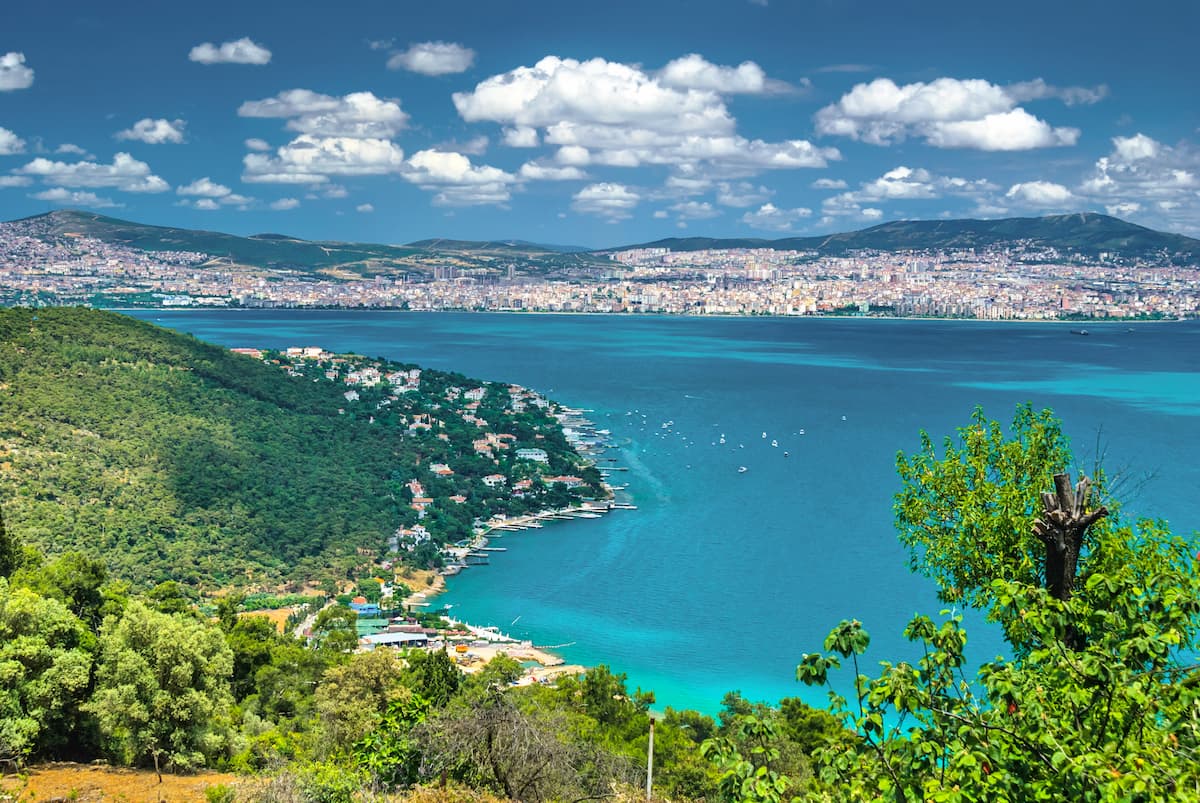
Marmara contains the entirety of a number of different provinces, including Edirne, Kırklareli, and Tekirdağ, İstanbul, Kocaeli, Yalova. It also contains parts of Balıkesir, Bursa, Çanakkale, Bilecik, and Sakarya provinces.
Within the Marmara region, there is also a small mountain range known as the Yıldız Mountains. The region contains a sizable number of parks and protected areas, including:
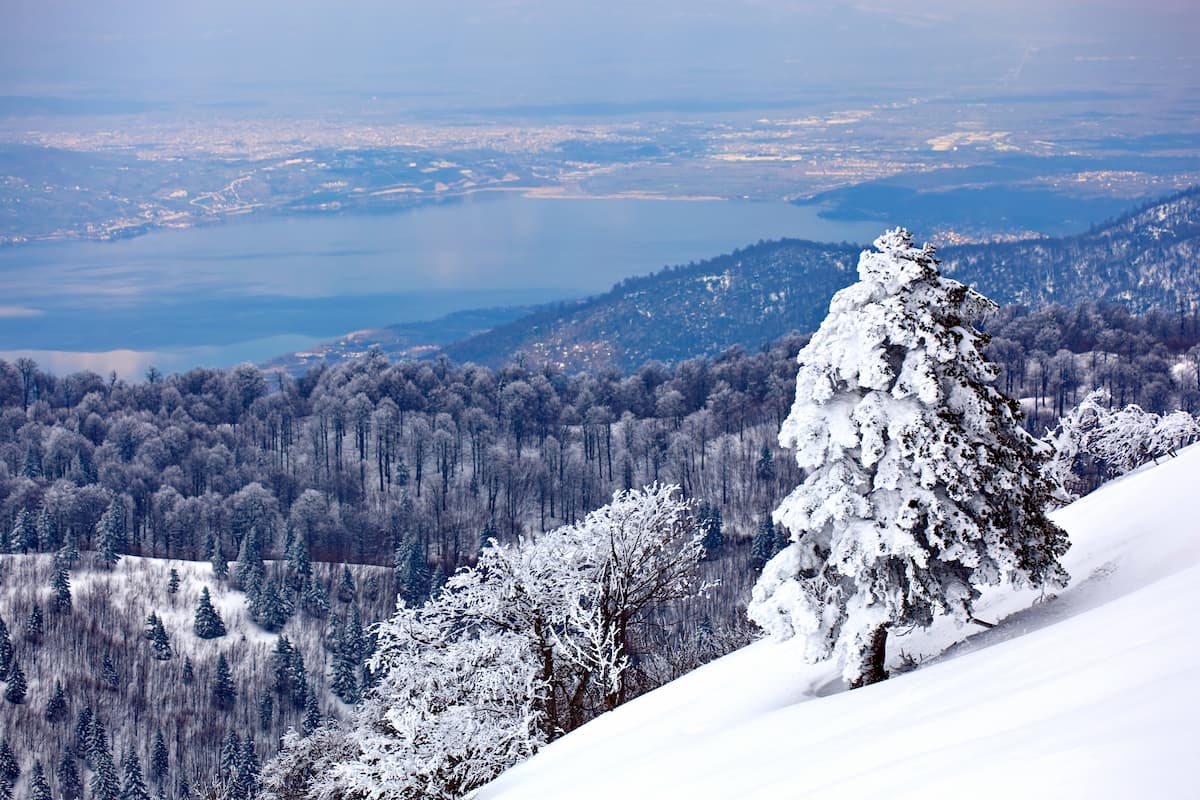
Aptly named, the Aegean Region (Ege Bölgesi) of Turkey is located just to the south of the Marmara region along the Aegean Sea. Due to the region’s many islands, it actually has more coastline than any other part of the country.
Boasting a typical Mediterranean climate, the Aegean region includes the provinces of Aydın, Manisa, İzmir, and Uşak. It also encompasses parts of Denizli, Muğla, Afyonkarahisar, Kütahya, Bilecik, Çanakkale, Balıkesir, Eskişehir, and Bursa provinces.

Moreover, the Aegean region is home to some beautiful national parks, such as:
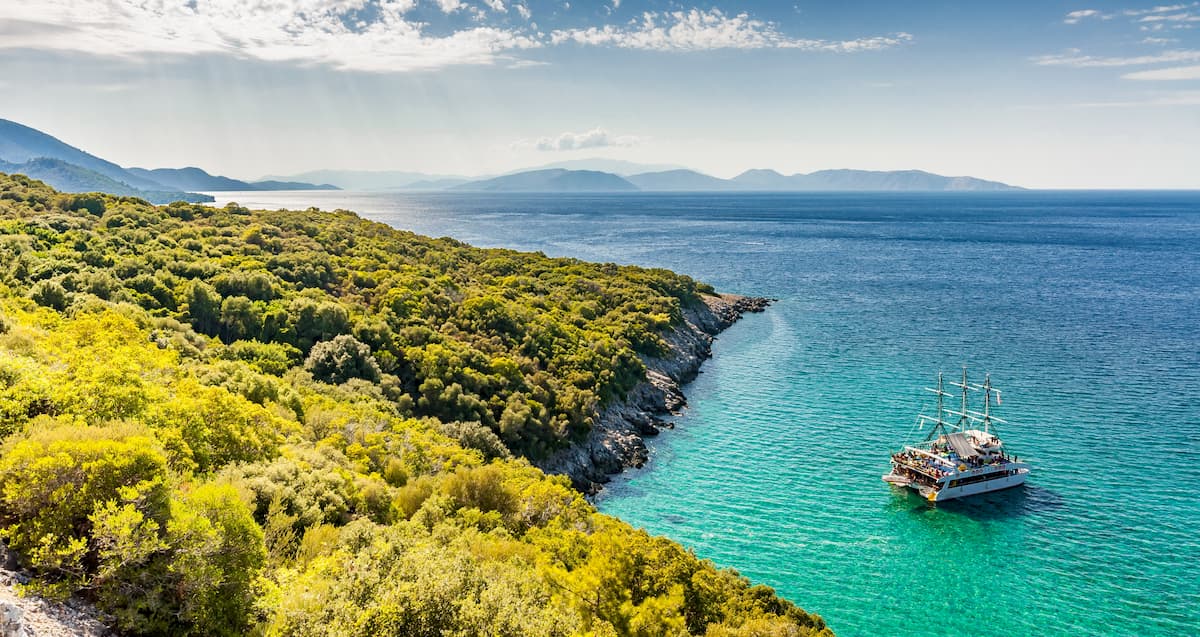
Stretching across Turkey’s northern shores, the Black Sea Region (Karadeniz Bölgesi) is a highly rural area that’s known for its stunning mountainscapes. Moreover, the Black Sea Region is also home to a small minority group known as the Laz or Lazi (ლაზი) in addition to the Turkish majority population.
Provinces within the Black Sea region include Gümüşhane, Bolu, Kastamonu, Ordu, Samsun, Tokat, Zonguldak, Amasya, Bartın, Giresun, Karabük, Rize, Sinop, and Trabzon. Meanwhile, the provinces of Artvin, Düzce, Bayburt, Çorum, Ardahan, Ankara, Çankırı, Erzurum, Erzincan, Sivas, Yozgat are partly included within the region.
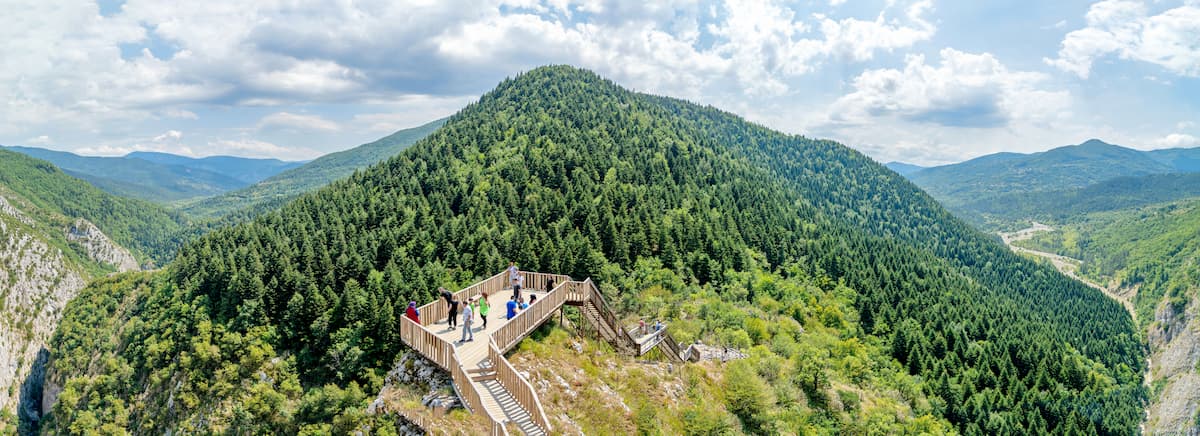
Although the Black Sea Region is coastal, it also encompasses a number of different mountain ranges, including the Pontic Mountains (Doğu Karadeniz Dağları), Kaçkar Mountains (Kaçkar Dağları), Köroğlu Mountains (Köroğlu Dağları), Küre Mountains (Küre Dağları).
In fact, the ruggedness of the terrain actually makes accessing the coast quite difficult and, in many places, the north coast of Turkey is isolated from the rest of Anatolia due to the sheer prominence of some of the country’s northern ranges.
Some of the many parks and outdoor recreation areas in the Black Sea Region include:
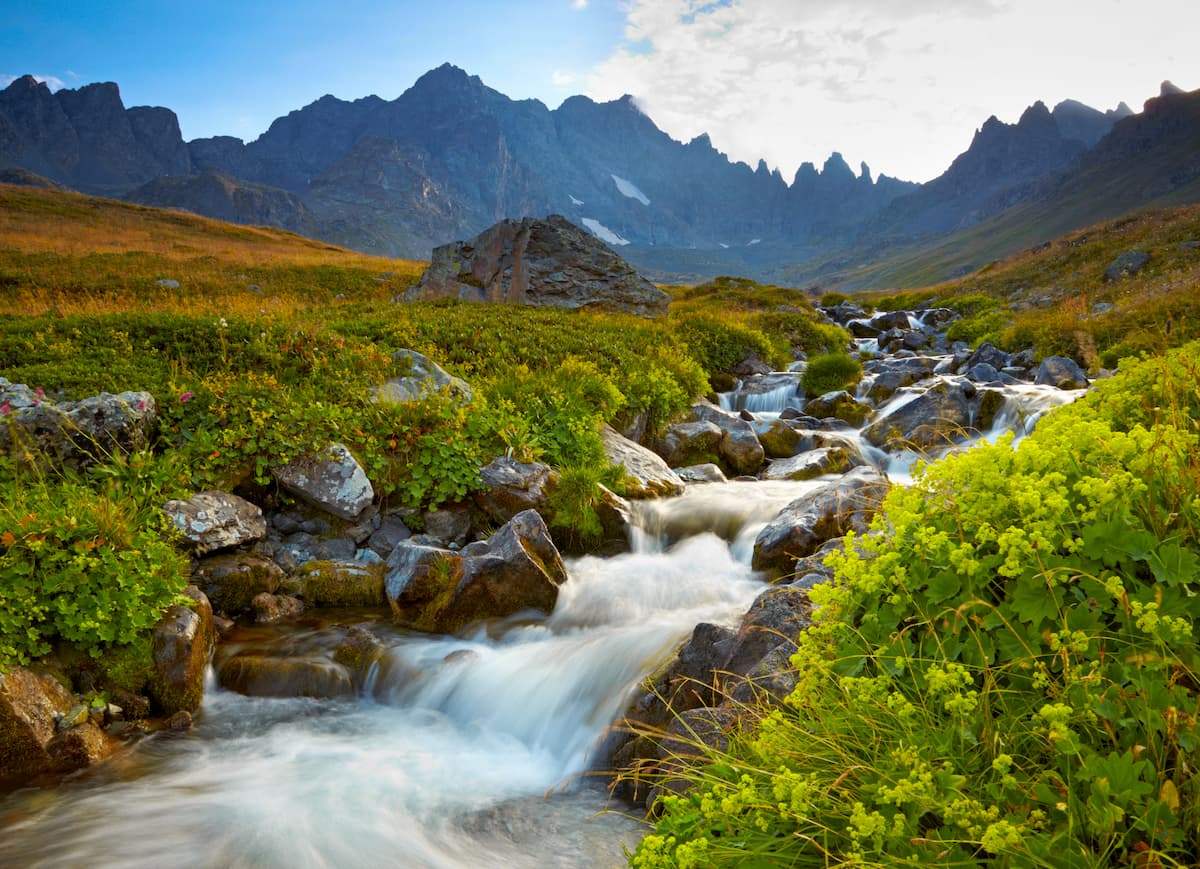
Encompassing a vast swath of interior Turkey, the Central Anatolia Region (İç Anadolu Bölgesi) is surrounded on all sides by land, though it does contain the country’s second largest lake - Lake Tuz (Tuz Gölü).
The Central Anatolia Region is home to the country’s capital, Ankara (Ancyra/Angora), which is the second largest city in the country, after Istanbul, with over 4.5 million residents. Moreover, the region includes the provinces of Aksaray, Kırşehir, Kırıkkale, and Nevşehir, as well as parts of Ankara, Eskişehir, Çankırı, Karaman, Konya, Kayseri, Yozgat, Sivas, Bilecik, Afyonkarahisar, Çorum, and Erzincan.
Although the Central Anatolia Region is substantially less mountainous than the rest of the country, especially when compared to the Black Sea Region to the north, it does contain its fair share of parks. Major parks in the region include:
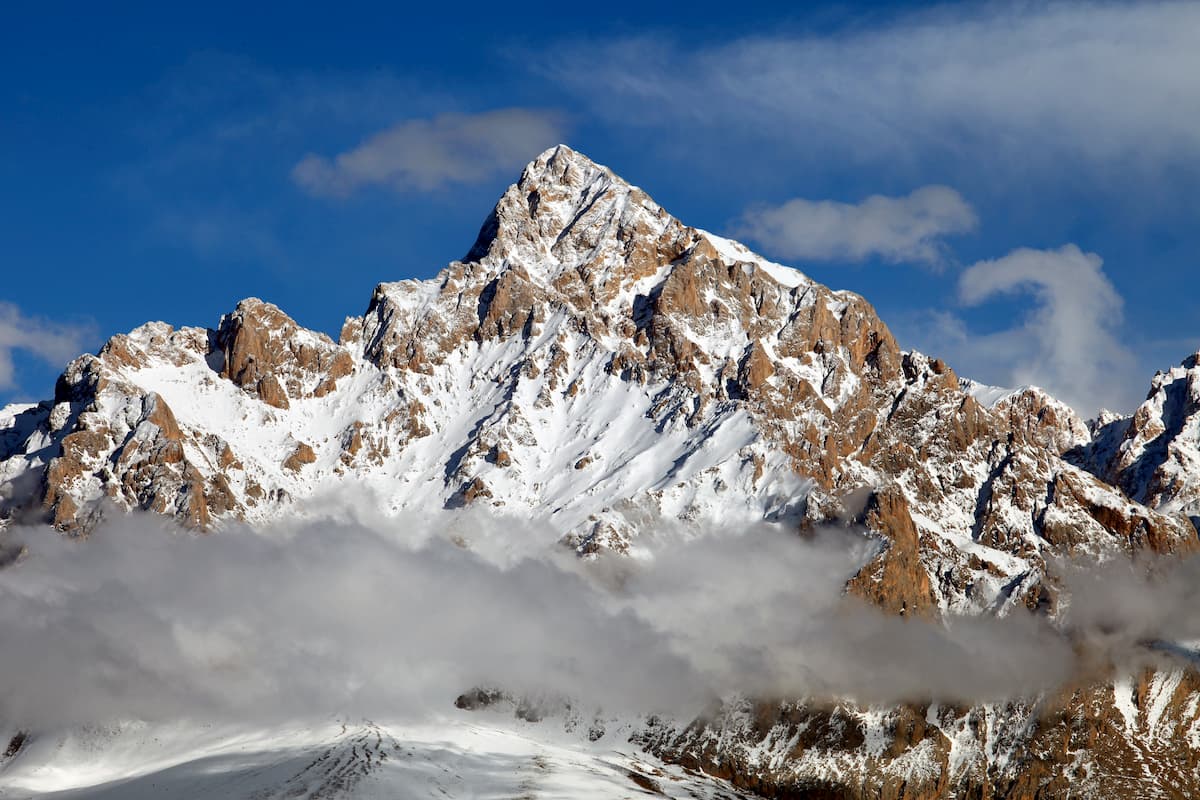
As the name suggests, Turkey’s Mediterranean Region (Akdeniz Bölgesi) covers much of its Mediterranean coast. It borders the Aegean Region to the west and includes the rest of the country’s southern coastline.
Provinces in the Mediterranean region include Adana, Antalya, Mersin, Burdur, Hatay, Isparta, and Osmaniye, as well as parts of Kahramanmaraş, Konya, Kayseri, Niğde, Denizli, Gaziantep, Karaman, Muğla, and Kilis.
Like its counterpart in the north, the Black Sea Region, the Mediterranean Region of Turkey is highly mountainous. The region includes parts of a number of ranges, including the Taurus Mountains (Toros Dağları) and the Nur Mountains (Nur Dağları).
However, there are some lower lying coastal areas in the region, particularly in Cilicia (Kilikya/Կիլիկիա/قيليقية) in the southeastern part of the country near Syria and Lebanon. In Cilicia, there is a large coastal plain known as Çukurova, which is known for being an exceptionally fertile agricultural area.
Throughout the Mediterranean region, there are a number of different national parks and nature reserves, such as:
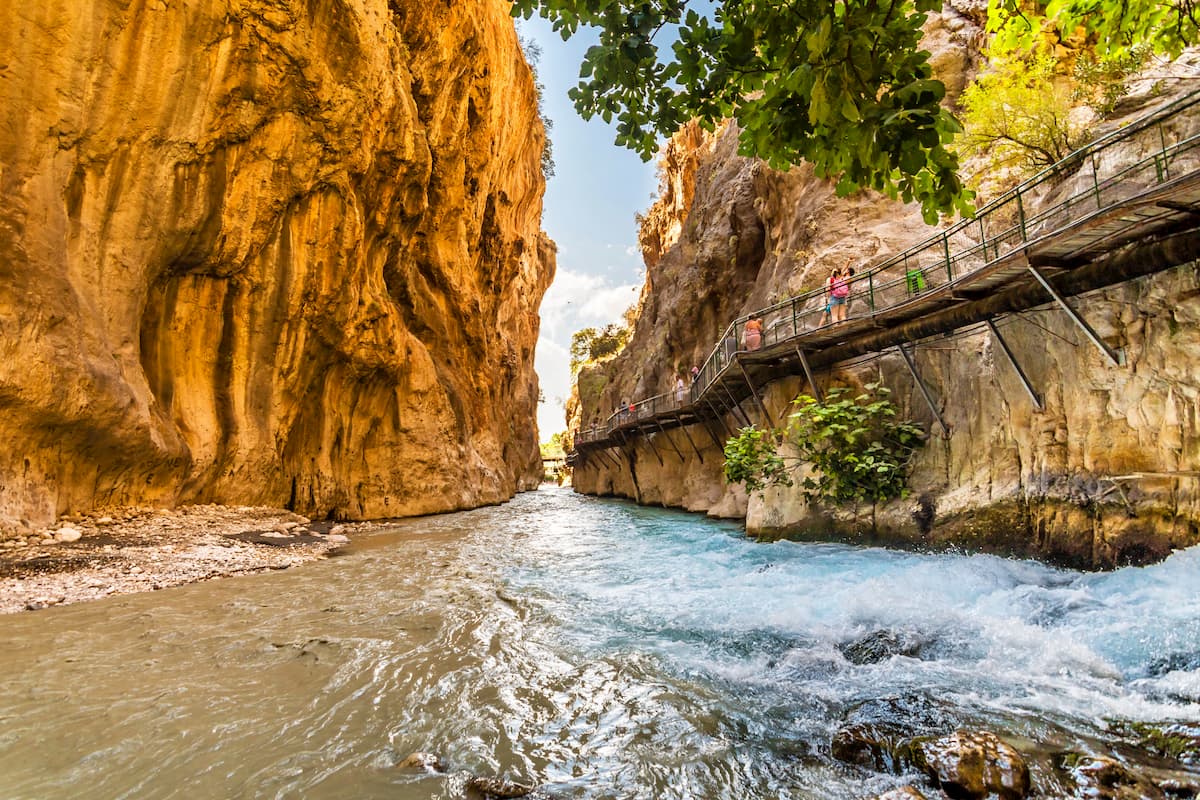
Home to the easternmost part of Turkey, the Eastern Anatolia Region (Doğu Anadolu Bölgesi) is the largest of the country’s regions. Moreover, Eastern Anatolia is the highest elevation region, in terms of average elevation, and the least densely populated part of Turkey.
Eastern Anatolia was once known as Western Armenia and was the site of the Armenian Genocide in 1915.
The region contains the provinces of Ağrı, Elazığ, Iğdır, Tunceli, Bingöl, Hakkâri, Kars, and Van, as well as parts of the provinces of Şırnak, Ardahan, and Erzurum. It also includes a significant portion of the Kaçkars Mountains, the Arsiani Range/Yalnızçam Mountains (Yalnızçam Dağları/არსიანის ქედი), the Çimen Mountains (Çimen Dağları), and a number of volcanoes, including Mount Ararat, Mount Tendürek (Tendürek Dağı/Թոնդրակ), Mount Süphan (Süphan Dağı/Սիփան), and Nemrut (Nemrut Dağı/Սարակն).
As it’s such a highly mountainous region, it comes as no surprise that Eastern Anatolia contains a number of popular national parks, such as:
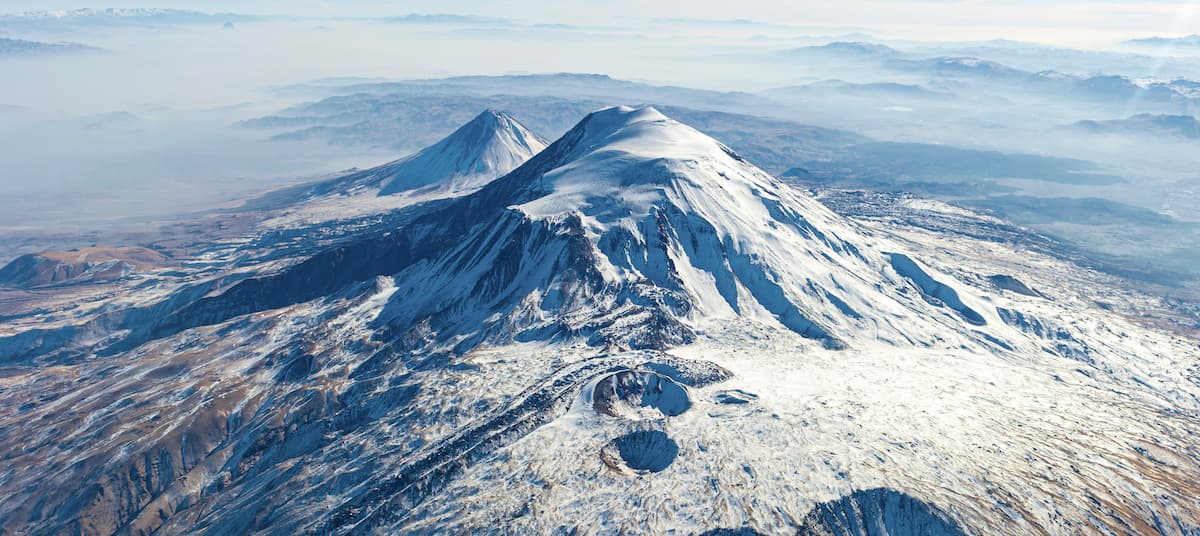
The seventh Turkish region, Southeastern Anatolia (Güneydoğu Anadolu Bölgesi) is located to the south of Eastern Anatolia and to the north of Syria and Iraq. It includes all of the provinces of Şanlıurfa and Mardin, as well as parts of the provinces of Malatya, Kahramanmaraş, Bitlis, Kilis, Bingöl, Siirt, Diyarbakır, Gaziantep, Batman, and Adıyaman.
This region of Turkey is known for being particularly hot and dry in the summer months, though it can get quite cold and snowy in the winter. Moreover, Southeastern Anatolia contains parts of the Taurus Mountains and a handful of parks, including:
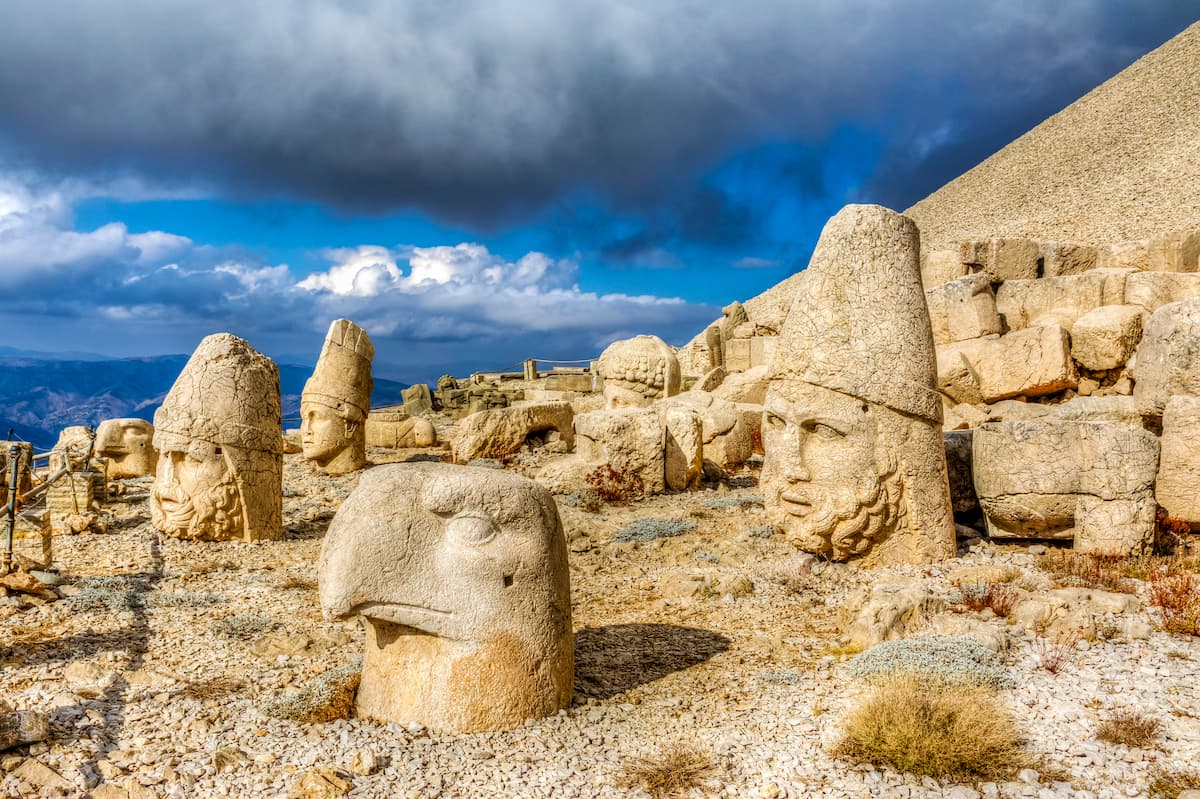
In a country as large and geographically varied as Turkey, there is no single history that tells the geologic tale of the entire landscape. Indeed, the entirety of what is now Turkey has been shaped by a number of tectonic processes over the last hundreds of millions of years and the region continues to be particularly seismically and volcanically active.
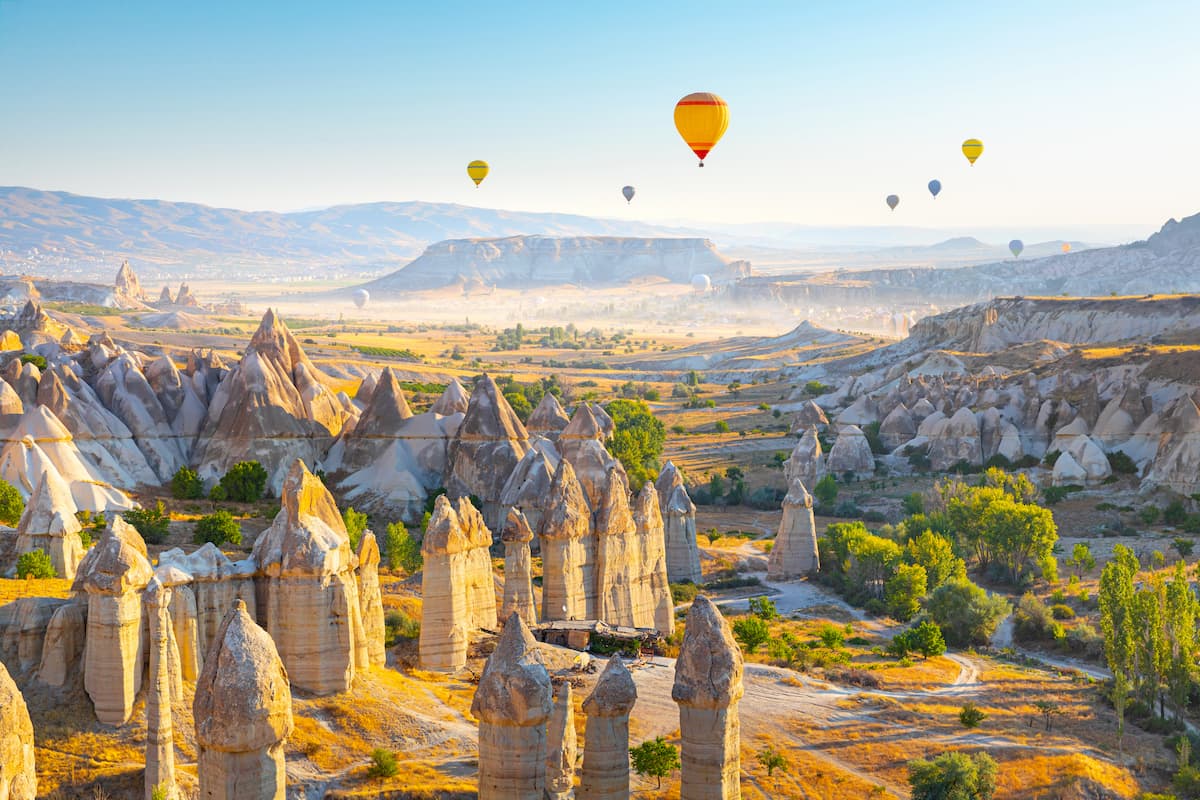
Geologically, much of Turkey and its mountain ranges are considered part of the Alpide Belt, which is a large seismic and orogenic belt that extends for some 15,000km (9,320 mi) from Indonesia, through southern Asia and the Himalayas, the Karakoram, the Hindu Kush, and the Caucasus before entering Turkey. Moreover, the belt even continues onward to the west and it includes the Alps and the Atlas Mountains.
The Alpide Belt region, including Turkey, started to form during the Cenozoic during a period of widespread collision among the Eurasian, African, Indian, and Arabian plates. In fact, the region is still tectonically active and there are a number of fault zones in and around the Mediterranean and Middle East.
That being said, the rocks within Turkey are quite varied in age, with some dating back to the Precambrian and Mesozoic, while others are substantially younger, having formed through volcanic activity during the Cenozoic.
It’s also important to point out that Turkey is an especially seismically active location, due to the many faults in the region. Major earthquakes occur quite regularly throughout the country, though the Marmara, Eastern Anatolia, and Southeastern Anatolia regions tend to be most affected by the quakes.
Major peaks in the country include Mount Ararat, Cilo Dağı, Mount Suphan, Kaçkar Dağı, Mount Erciyes, and Hasan Dağı.
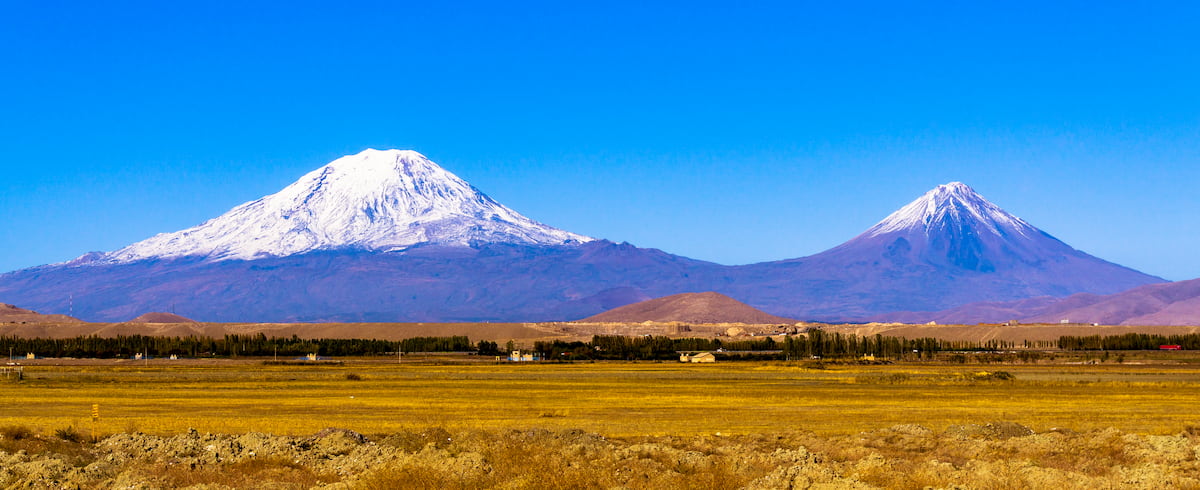
Each of Turkey’s geographical regions contains a number of different ecosystems and ecoregions, which span the spectrum of biomes from temperate forests to grasslands, scrub, coniferous forests, and alpine zones. In fact, there are about a dozen different ecoregions within Turkey, alone.
From west to east, here are some of the most prominent ecoregions in the country:
Covering much of the eastern Balkans, including parts of Bulgaria, Albania, Bosnia and Herzegovina, North Macedonia, Greece, Kosovo, Serbia, Romania, and western Turkey, the Balkan Mixed Forests is a humid subtropical area that’s dominated by a mix of oak and pines.
Major tree species in the ecoregion include Hungarian oak, downy oak, and Turkey oak, as well as European beech, Bosnian pine, Scots pine, Macedonian pine, Norway spruce, and silver fir. However, as much of western Turkey is heavily populated, the remaining Balkan Mixed Forest in the country is highly fragmented.
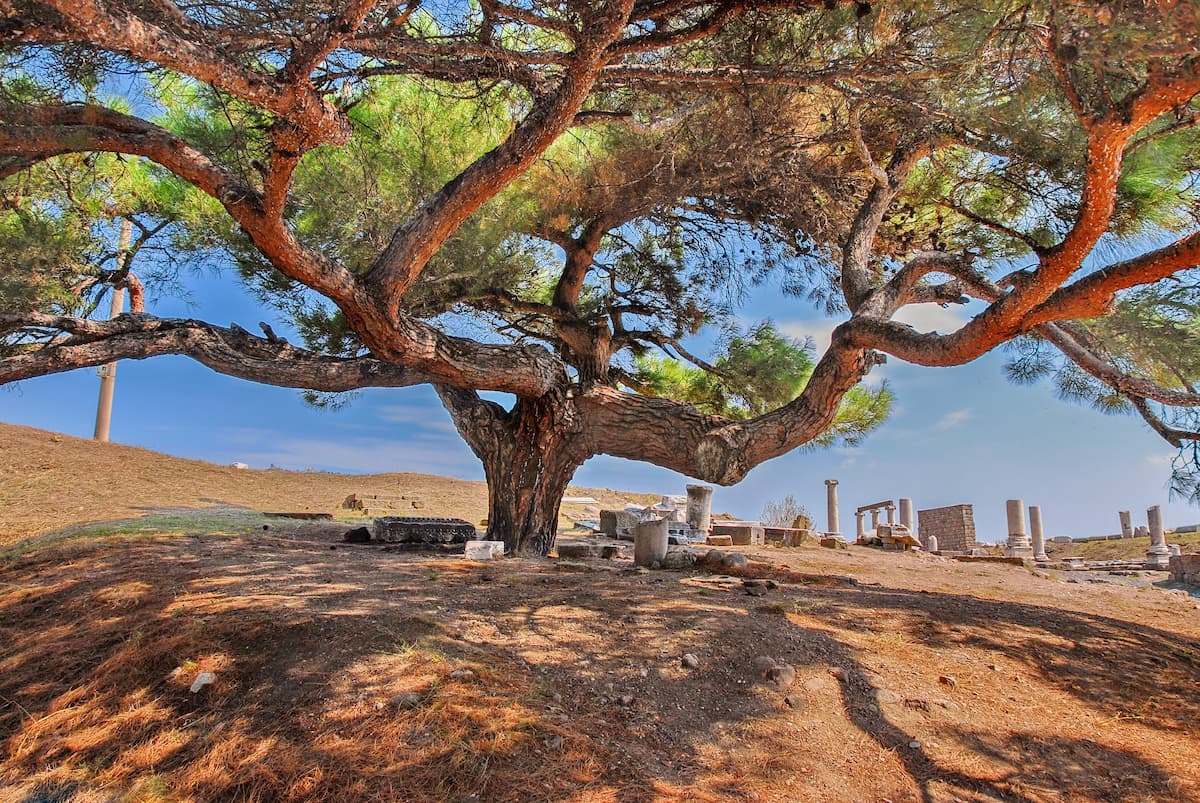
The Aegean and Western Turkey Sclerophyllous and Mixed Forests ecoregion is found mostly in the coastal regions of the Aegean Sea in Greece, North Macedonia, Bulgaria, and southwestern Turkey.
It is a mixed ecoregion with shrublands, scrub, and interspersed woodlands. Primary plant species in this ecoregion include strawberry trees, tree heather, kermes oak, Turkish pine, holm oak, Aleppo pine, and oriental sweetgum, though the latter has quite a small distribution in western Turkey.
This region is traditionally home to a large number of different animals, including wild boar, golden jackals, Eurasian lynx, European wildcats, and brown bears, however some are now quite rare in the region.
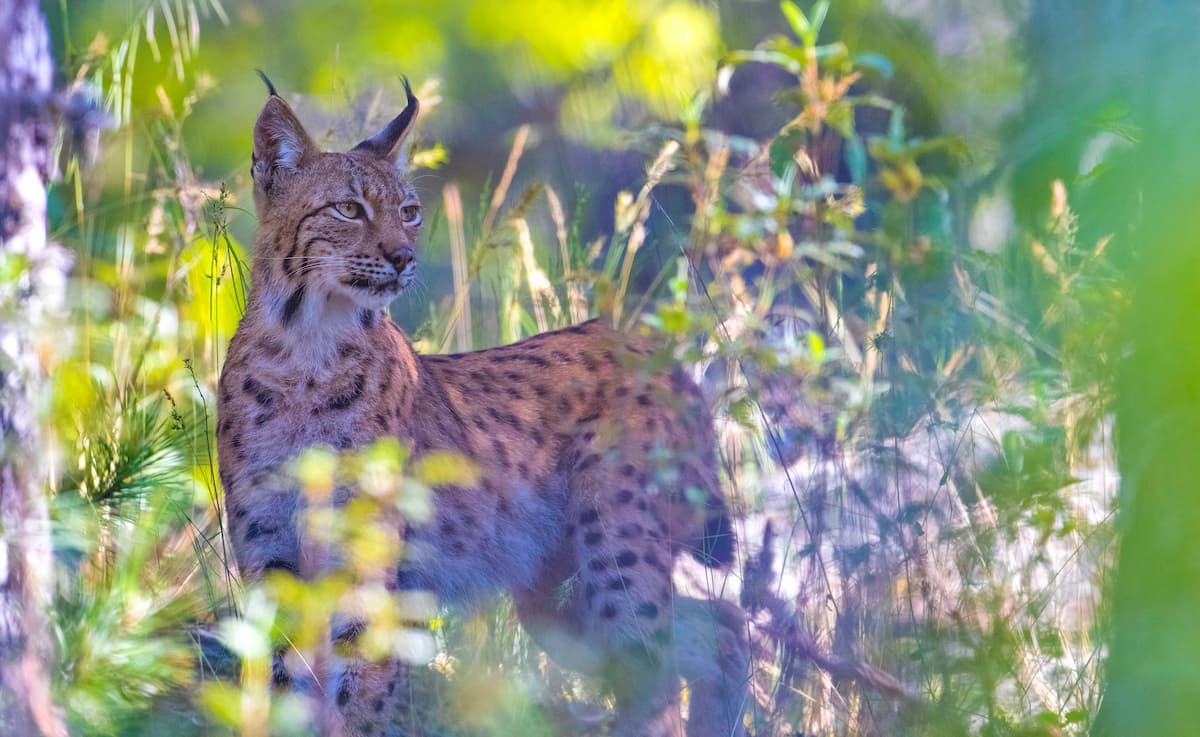
Stretching across Turkey’s Black Sea coastline, the Euxine-Colchic Deciduous Forests ecoregion is an ecologically rich area that boasts a wide range of different flora and fauna.
Forests in the region are primarily deciduous, though some conifers are found in higher elevations. Tree species include blakc alder, oriental beech, sweet chestnut, Nordmann fir, Caucasian spruce, and Scots pine.
Meanwhile, animal species include roe deer, Caucasian red deer, Eurasian lynx, golden jackals, and a whole host of different migratory and breeding bird species, including various species of flamingos, cranes, and storks.
Making up the bulk of Turkey’s interior region, the Central Anatolian Deciduous Forests covers much of the central plateau of the country. It has a continental climate with cold winters and hot summers, which support the region’s shrub steppe ecosystems.
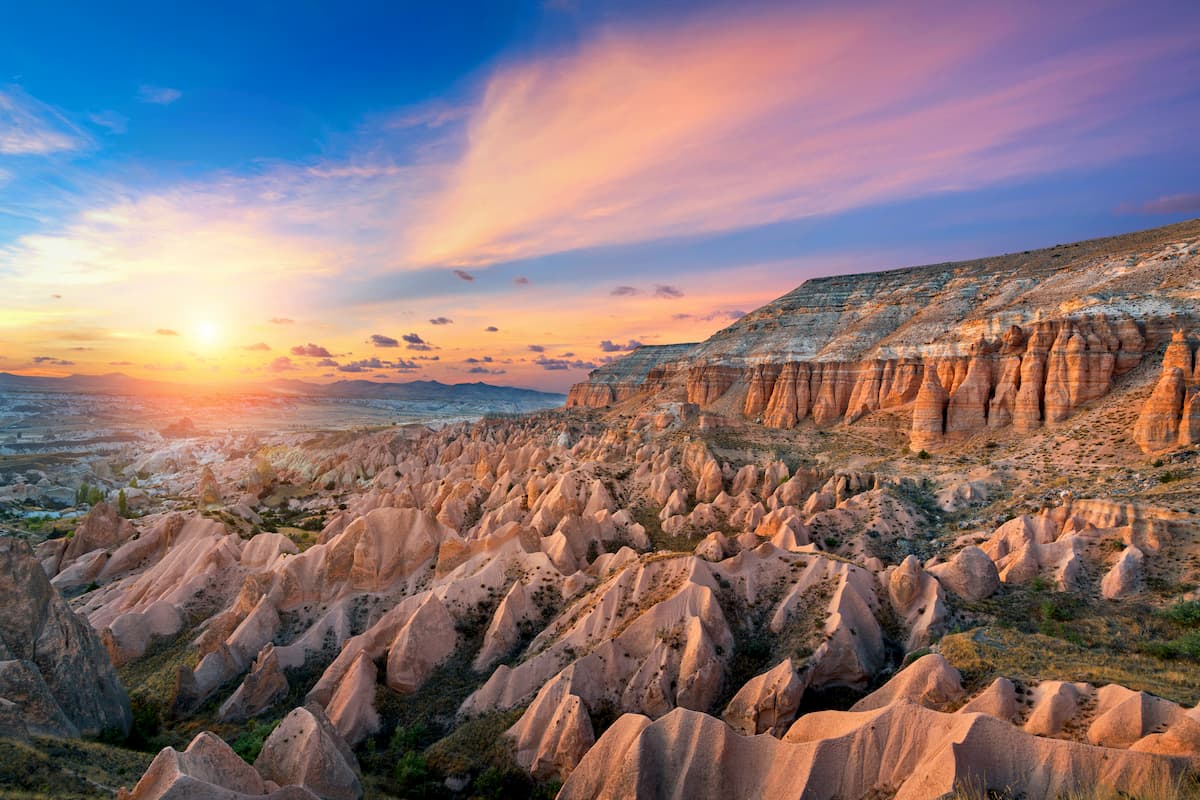
However, as a result of human development, much of the rarea is now mixed steppe and open woodland with only small patches of trees remaining at the mid elevations. Species include downy oak, Aleppo oak, Austrian pine, prickly juniper, and Greek juniper.
Stretching from southwestern Turkey to Lebanon, Israel, and Syria along the Mediterranean coast, the Southern Anatolian Montane Conifer and Deciduous Forests is a major ecoregion with a typical Mediterrranean climate.
Perhaps the most characteristic tree in the area is the Lebanon cedar, though other species, like Austrian black pine, Taurus fir, stinking juniper, and Greek juniper are also common.
Located in eastern Turkey as well as Armenia, Georgia, Azerbaijan, and Iran, the Eastern Mediterranean Conifer-Sclerophyllous-Broadleaf Forest is a massive ecoregion located in the foothills of the Caucasus, Pontiac, and Zagros Mountains.
Here, the ecosystems are mostly mountain steppe, with various shrubs and grasses. There are also some open steppe woodlands with juniper trees and some sprawling alpine plant communities at the higher elevations.
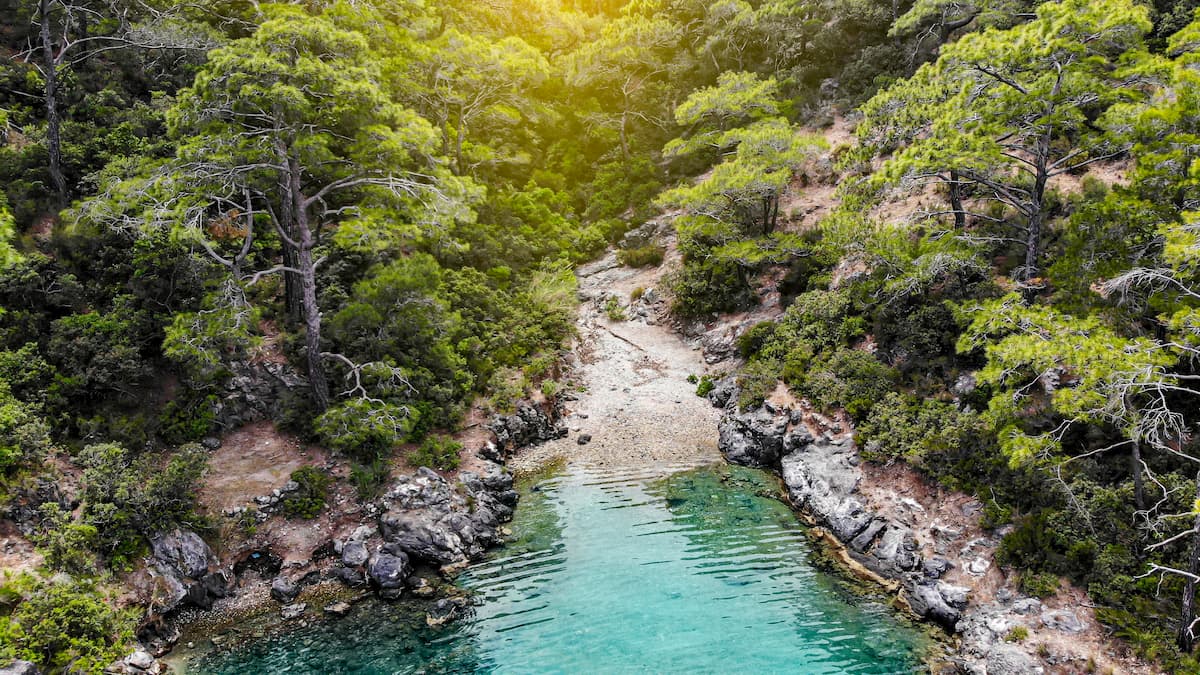
Traditionally, animals such as brown bears, wild goats, striped hyenas, and grey wolves could be found in the region, though most of these species are experiencing dwindling population numbers.
Forming a bridge between the Central Anatolian Deciduous Forests and the Euxine-Colchic Deciduous Forests, the Northern Anatolian Coniferous and Deciduous Forests are located in north-central Turkey in the Pontic Mountains.
This ecoregion tends to get a decent amount of rainfall, which supports its many forests. Primary species include Anatolian black pine, oriental beech, Turkish fir, Scots pine, Caucasian fir, cade juniper, and common juniper.
Meanwhile, animal species include red and roe der, brown bears, grey wolves, wild goats, and Anatolian chamois.
A wide and varied ecoregion, the Eastern Anatolian Montane Steppe can be found in southern and eastern Turkey along the Mediterranean coast, as well as in Israel, Palestine, Jordan, Lebanon, Syria, and Saudi Arabia.
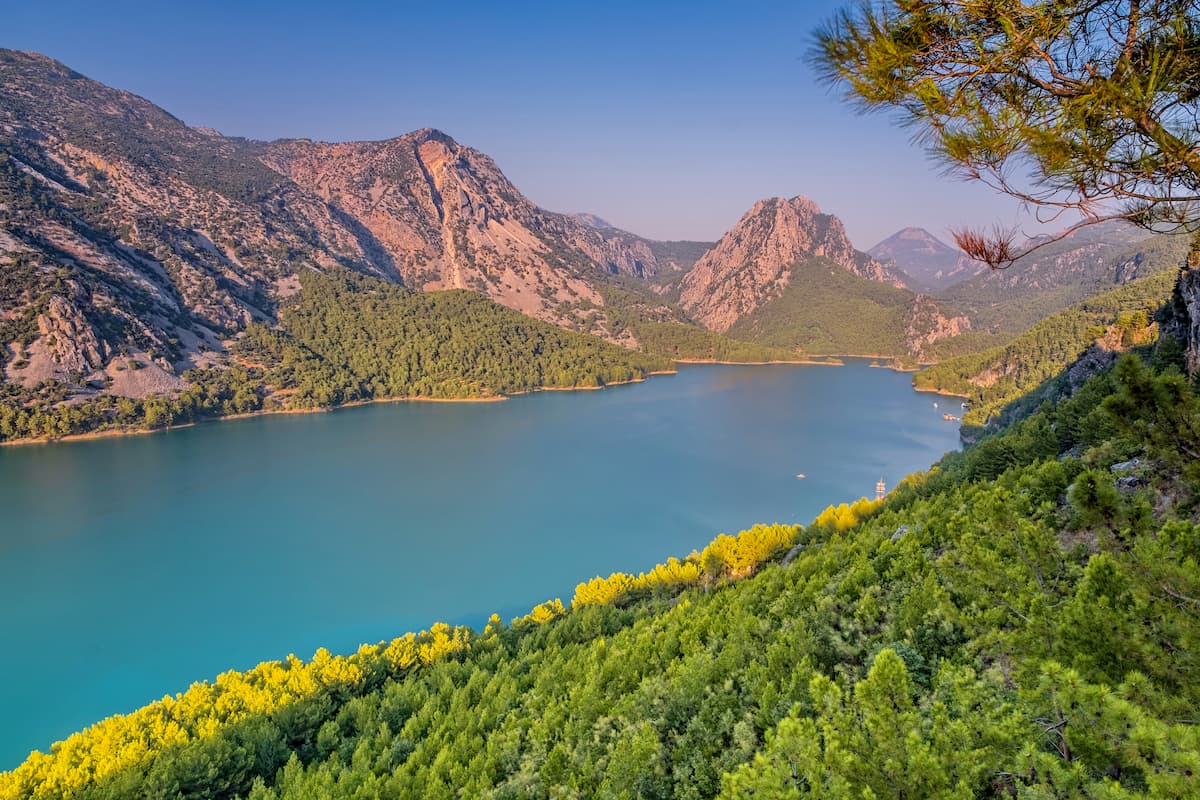
Within this ecoregion, much of the land is dominated by shrublands, though there are also some pine forests, which include both Aleppo and Turkish pine. Other species include olive trees, Palestine oak, turpentine tree, and the Greek strawberry tree.
The final major ecoregion in Turkey is the Caucasus Mixed Forests, which is found in the northeastern part of the country as well as in Georgia, Armenia, Russia, Iran, and Azerbaijan.
As the name suggests, the forests in this region are mixed, with some deciduous forests of Georgian oak, sweet chestnut, oriental beech, and Caucasian oak at the lower elevations. At higher elevations, one can find mostly conifers, with Caucasian spruce, Nordmann fir, and Caucasian pine dominating on higher slopes.
This area is also particularly rich with wildlife, serving as an ideal habitat for East Caucasian tur, West Caucasian tur, Caspian red deer, Caucasian chamois, mouflon, wild goats, Eurasian brown bears, wolves, and even the endangered Caucasus leopard.
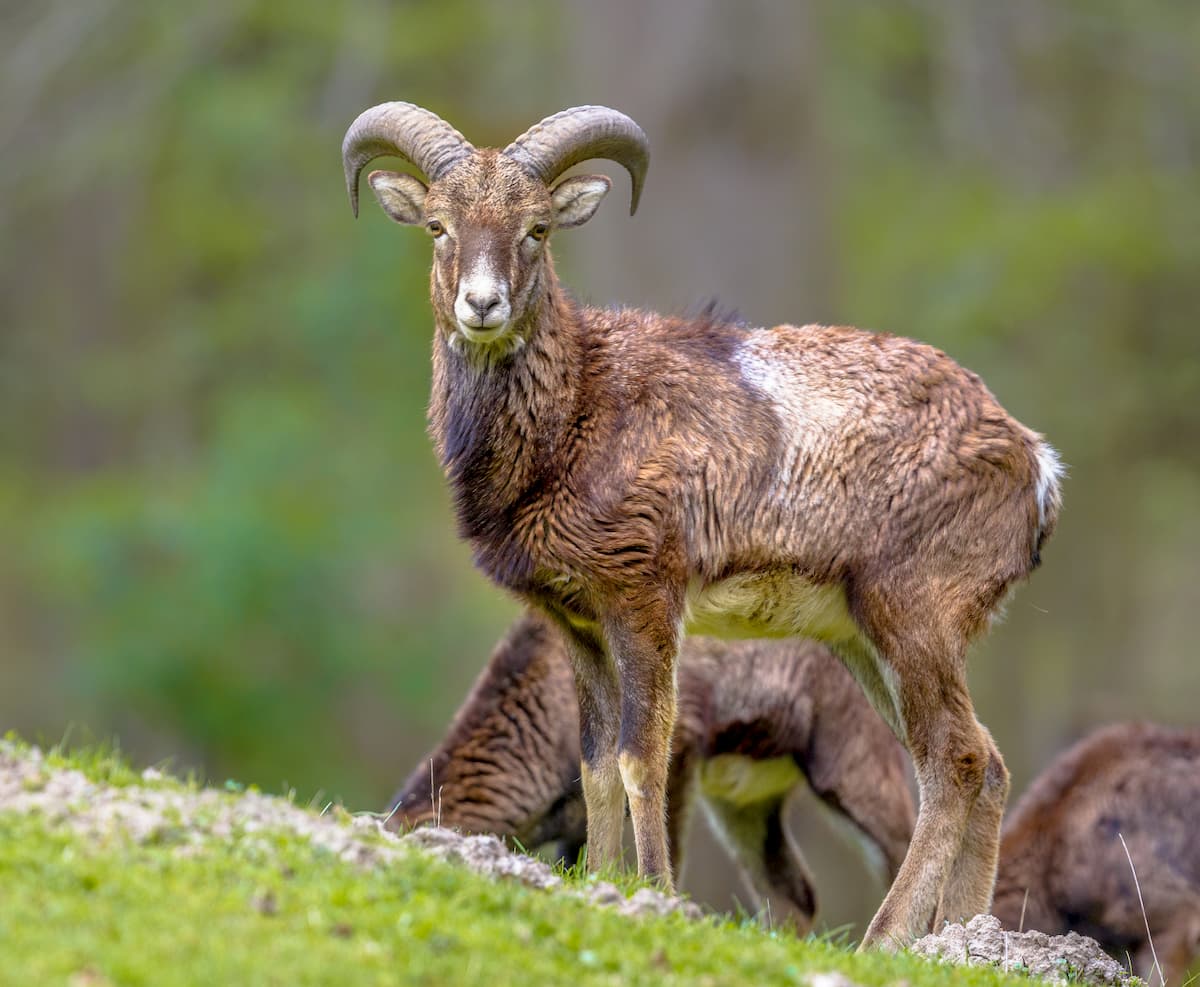
The area that is now called Turkey has a long and storied history that dates back at least to the Paleolithic. Indeed, the region is well represented in classical texts as much of Anatolia was part of the Persian Empire for quite some time.
However, Persian control of the region ended with Alexander the Great, who defeated King Darius III in the 330s BCE. At around the same time, what is now western Turkey in Thrace, was divided into a number of smaller regions that were eventually overtaken by the Macedonians.
What is now Istanbul then became the capital of the Roman Empire when Constantine decreed that Byzantium (later Constantinople) would be the government seat of the region. However, this period saw a number of conflicts between the Byzantines and neighboring groups, which eventually paved the way for the arrival of the Turkic peoples.
The Turkic peoples eventually arrived in Anatolia in various waves, though the primary migration to the region happened during the Middle Ages. This eventually led to the establishment of the Ottoman Empire, whose power peaked during the 16th and 17th centuries.
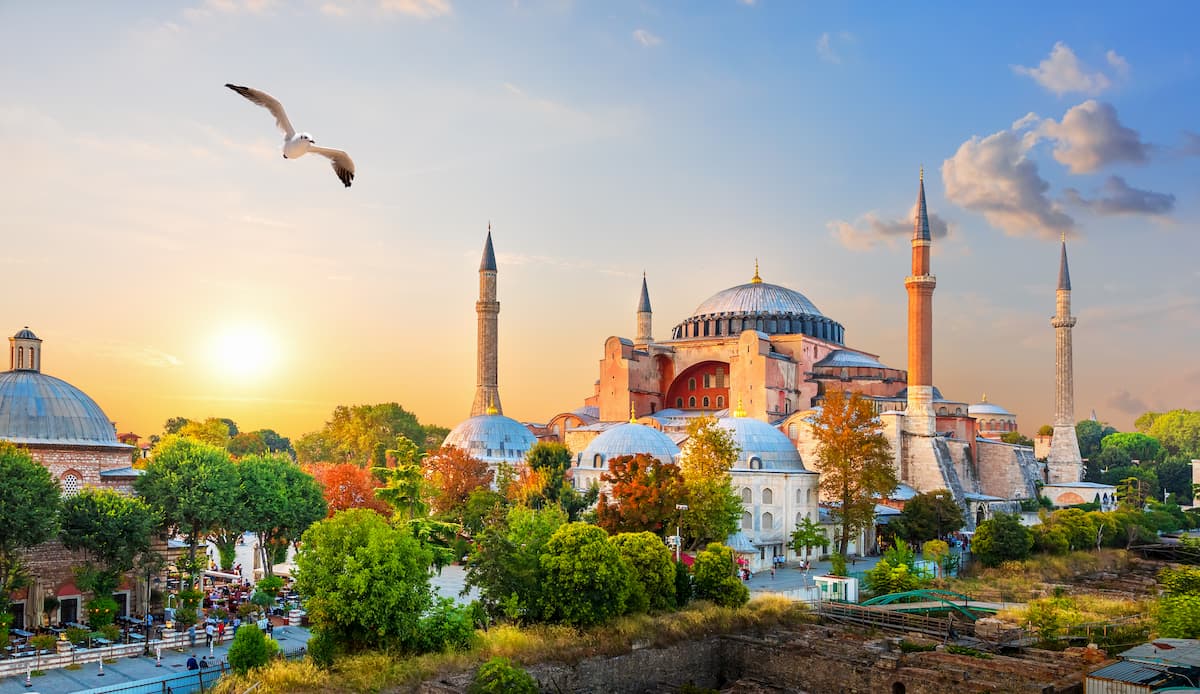
By the 19th and 20th centuries, the Ottoman Empire had lost its control of many of its territories, including much of what is now Libya, Algeria, Greece, Tunisia, and the other Balkan states.
During World War I, the country that is now Turkey fought alongside the Central Powers as the Ottoman Empire and was defeated. At the same time, the Armenian Genocide of 1915 took place in what is now eastern Turkey.
After the war, the Ottoman Empire was broken up and a new Turkish national movement took hold. The new Republic of Turkey gained international recognition after the Treaty of Lausanne and it remained neutral during much of World War II.
In more recent years, Turkey has experienced a number of tumultuous events, including participation in the Korean War alongside UN forces, joining NATO, and taking part in a number of coups and invasions.
However, by the end of the 20th century and the start of the 21st century, the Turkish economy has strengthened considerably and it is a major player on the world stage. In particular, the country has burgeoning automotive, banking, manufacturing, and agricultural industries, despite a number of financial crises.
Turkey has also become a major tourist destination thanks to its truly stunning landscapes and rich cultural history. The country has over a dozen UNESCO World Heritage Sites, so it’s a must-visit for any world traveler.
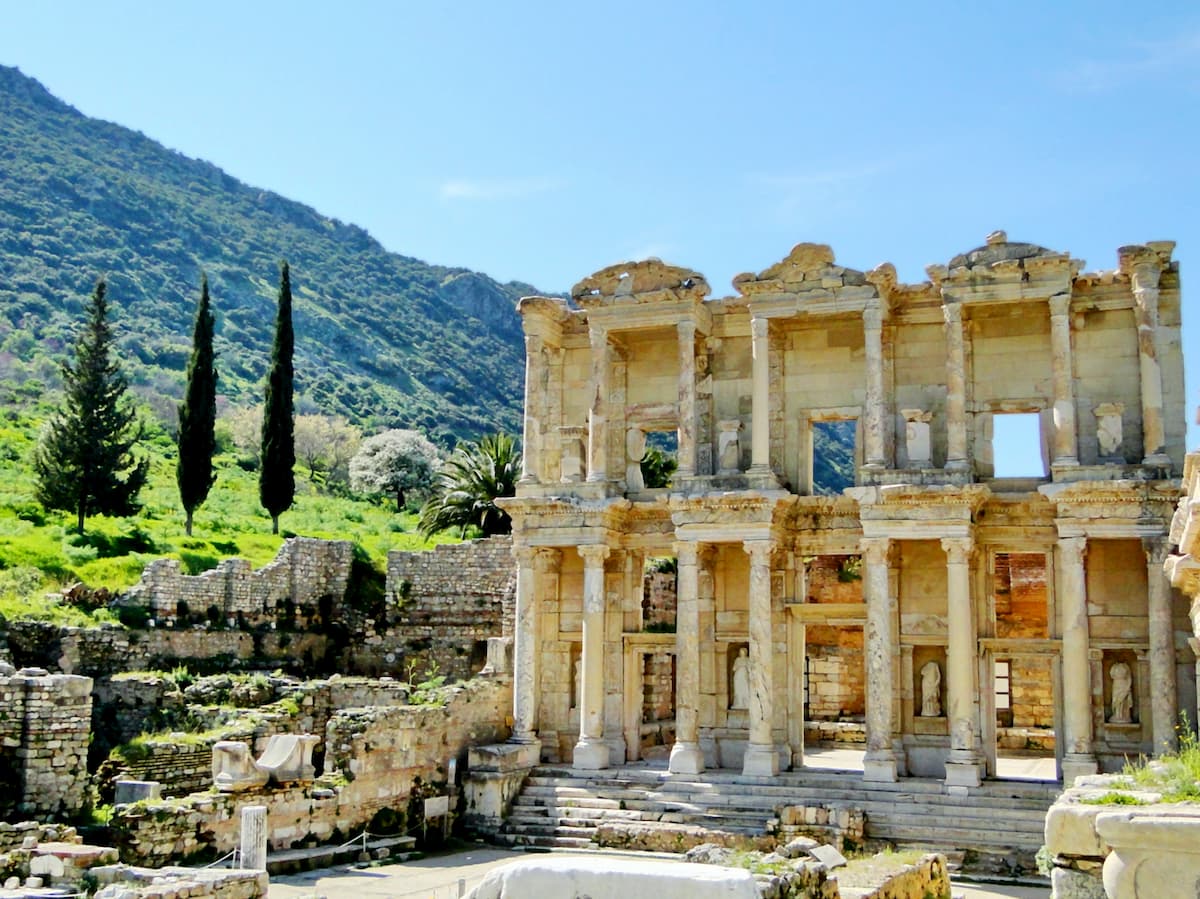
In a country as stunning and topographically diverse as Turkey, there are plenty of places to check out if you’re looking to hike and adventure. Here are some of the best national parks in Turkey to visit during your stay:
Located in the easternmost part of Turkey, Mount Ararat National Park (Ağrı Dağı Millî Parkı), is a stunning alpine region that’s perfect for outdoor adventure. The park contains 11 named mountains, the highest and most prominent of which is the country’s high point - Mount Ararat.
Over the centuries, Mount Ararat has actually been searched a number of times for remains of Noah’s Arc as it’s believed to be the resting place of the biblical ship. These days, Mount Ararat and its surroundings are home to some great hiking routes. However, due to the elevation of Mount Ararat itself, many hikers require an acclimatization period before making a summit attempt.
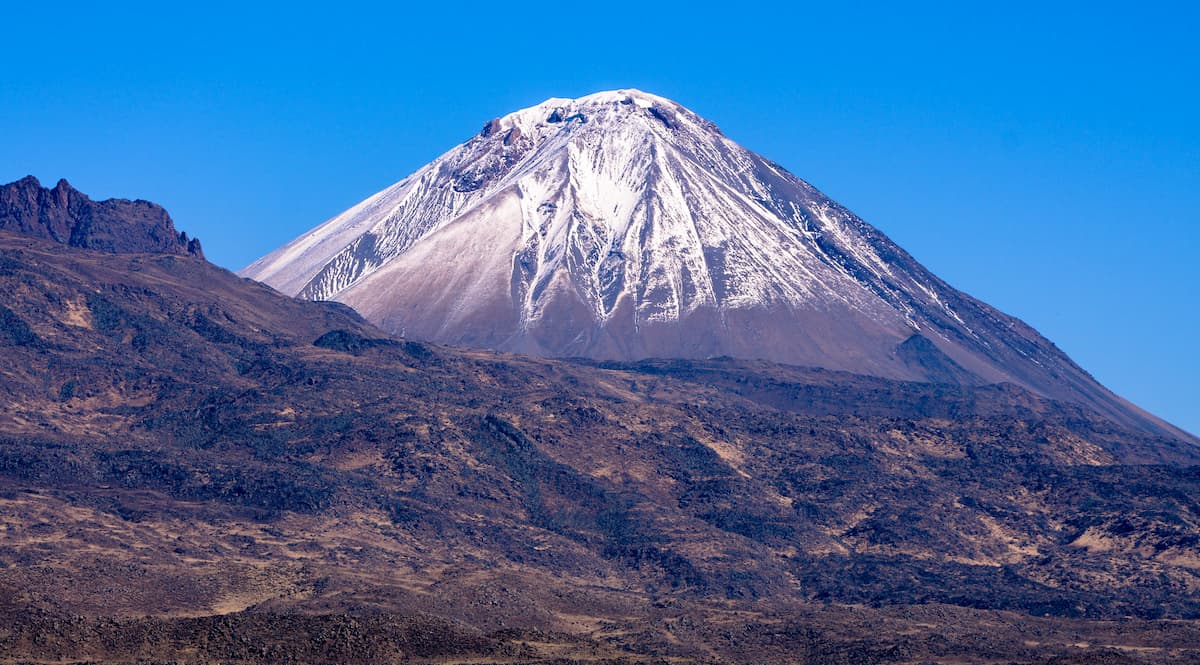
Kaçkar Mountains National Park (Kaçkar Dağları Milli Parkı) is located in northeastern Turkey near the Georgian border. It is home to 37 named mountains, the highest and most prominent of which is Kaçkar Dağı.
The park is known for its spectacular alpine scenery and rugged terrain. It is also considered one of the best trekking locations in the country, particularly from June to September. There are a number of trekking routes in the park, though care is necessary due to the high elevation of the region and the high likelihood of encountering snow.
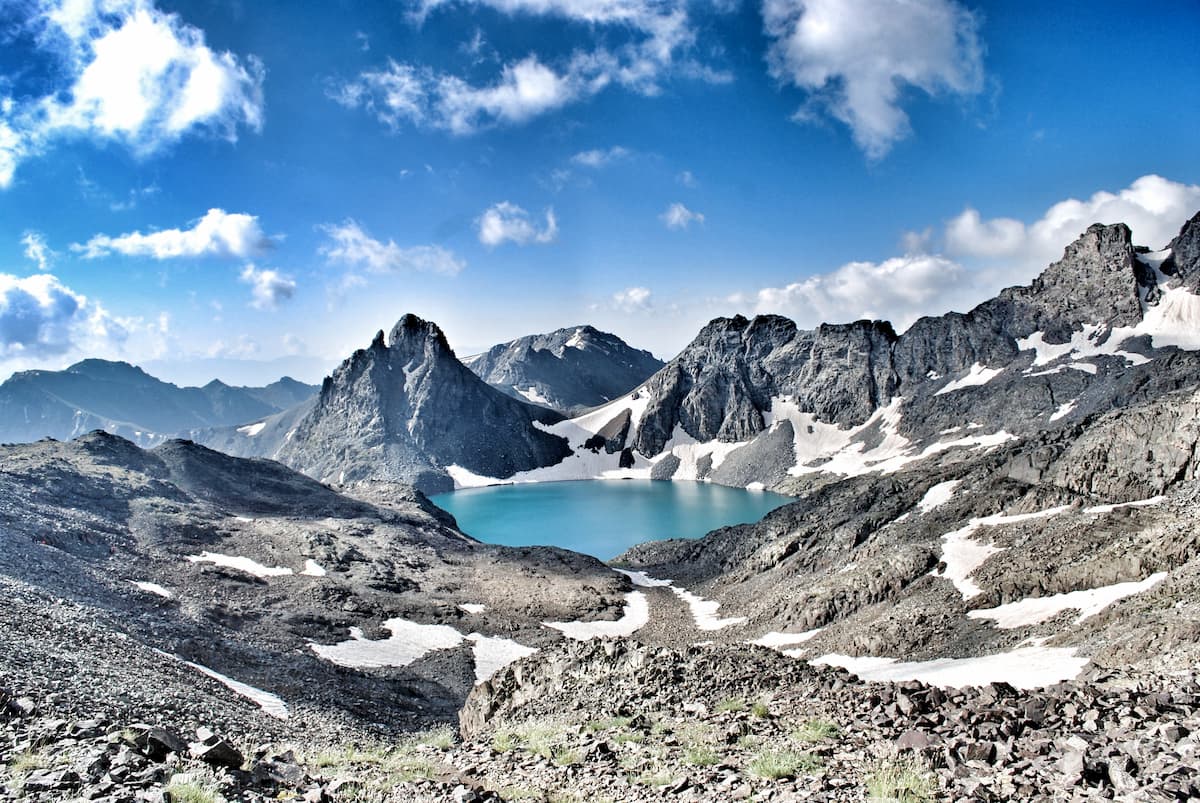
Aladağlar National Park (Aladağlar Milli Parkı) is a small national park in south-central Turkey that boasts beautiful mountain views. The park contains 35 named mountains, the highest and most prominent of which is Kızılkaya.
Often referred to as the Crimson Mountains, the peaks in the park make for excellent mountaineering opportunities. There are also plenty of lakes in the park during the spring, so it’s the perfect place for an alpine adventure.
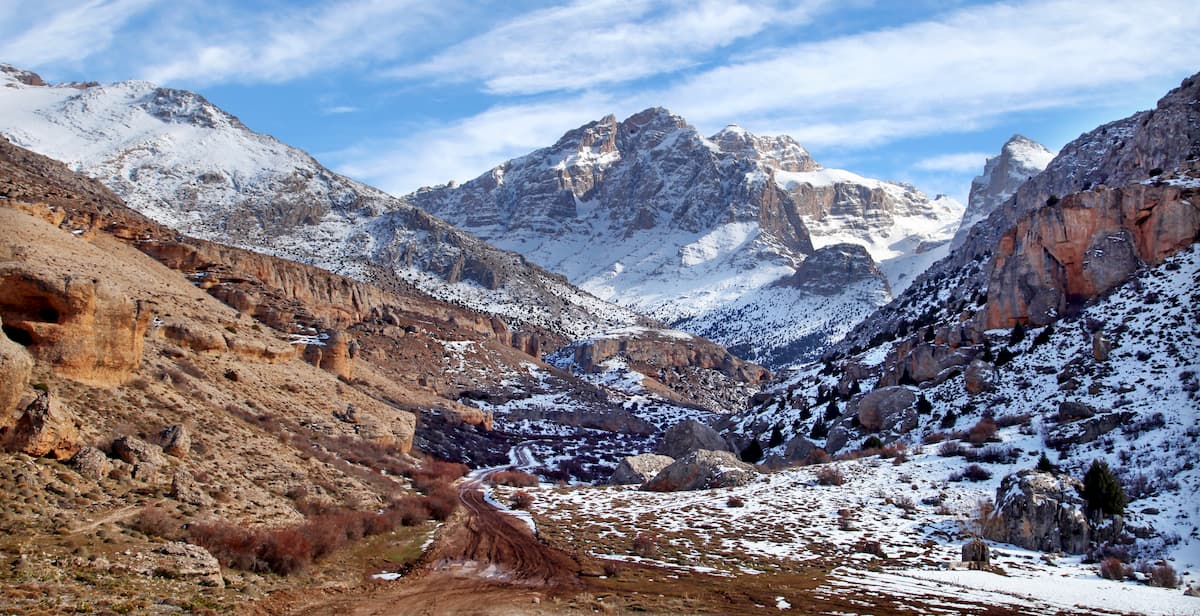
For skiing and snowboarding enthusiasts, there are more than 35 ski resorts in Turkey, which are located throughout the country.
The largest ski resort in Turkey is Erciyes-Kayseri in Central Anatolia with more than 55 km (34 mi) of slopes and more than 12 ski lifts. However, two other individual resorts, Palandöken and Konakli, in Eastern Anatolia, which are parts of the larger Ejder 3200 World Ski Center, offer more than 65 km (40 mi) of slopes and more than 20 ski lifts in total together.
Other major areas for skiing in Turkey with more than 10 km (6 mi) of slopes and more than 5 ski lifts each include the following in descending order of size:

The main ski resort near Istanbul, the largest city in Turkey, is Uludağ-Bursa in the Marmara Region (Marmara Bölgesi) with more than 25 km (16 mi) of slopes and more than 25 ski lifts. It is also the third-largest ski resort in all of Turkey after Erciyes-Kayseri, and Ejder 3200 World Ski Center.
Check the Turkey ski resorts map in the World Mountain Lifts section of the site. It includes information about open ski lifts / slopes in Turkey in real-time with opening dates and hours. There are also year-round cable cars, funiculars, cog railways, aerial tramways, and all other types of mountain lifts.
Looking for a place to stay in Turkey? Here are some of the best places to check out:
The largest city in the country, Istanbul is the cultural and economic hub of Turkey. Istanbul has a rich history dating back millenia and it is home to about 15 million people. Located in both Asia and Europe, Istanbul is home to a number of different UNESCO World Heritage Sites, including the Hagia Sophia.
Getting to Istanbul is fairly straightforward as it has 2 major international airports and excellent public transport, which marks it the perfect place to start your adventure.

Located in central Turkey, Ankara is the country’s capital and second most populous city with about 4.5 million residents. Ankara boasts some stunning remains of both Roman and Ottoman architecture as well as plenty of cultural sites for visitors to check out.
The city has an airport, a major train station, and great public transportation options to help you travel around the country as seamlessly as possible.
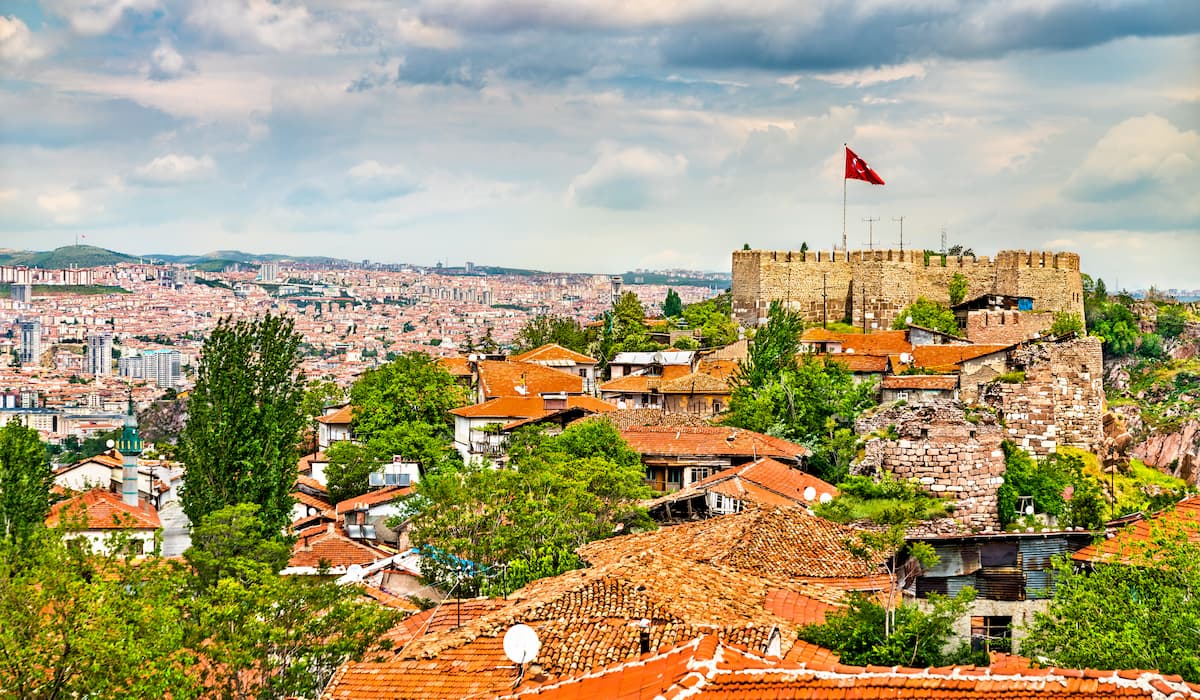
The town of Göreme is located in the historical region of Cappadocia in central Turkey and it is home to about 2,000 people. Although it’s not quite a major metropolis like nearby Ankara, Göreme is famous for its stunning rock formations and cultural sites.
Moreover, the hills above Göreme are the perfect place to watch hot air balloons take off in the sunrise. Alternatively, it’s a great place to sign up for a hot air balloon ride, if you’re up for a bit of an adventure.

Explore Turkey with the PeakVisor 3D Map and identify its summits.








